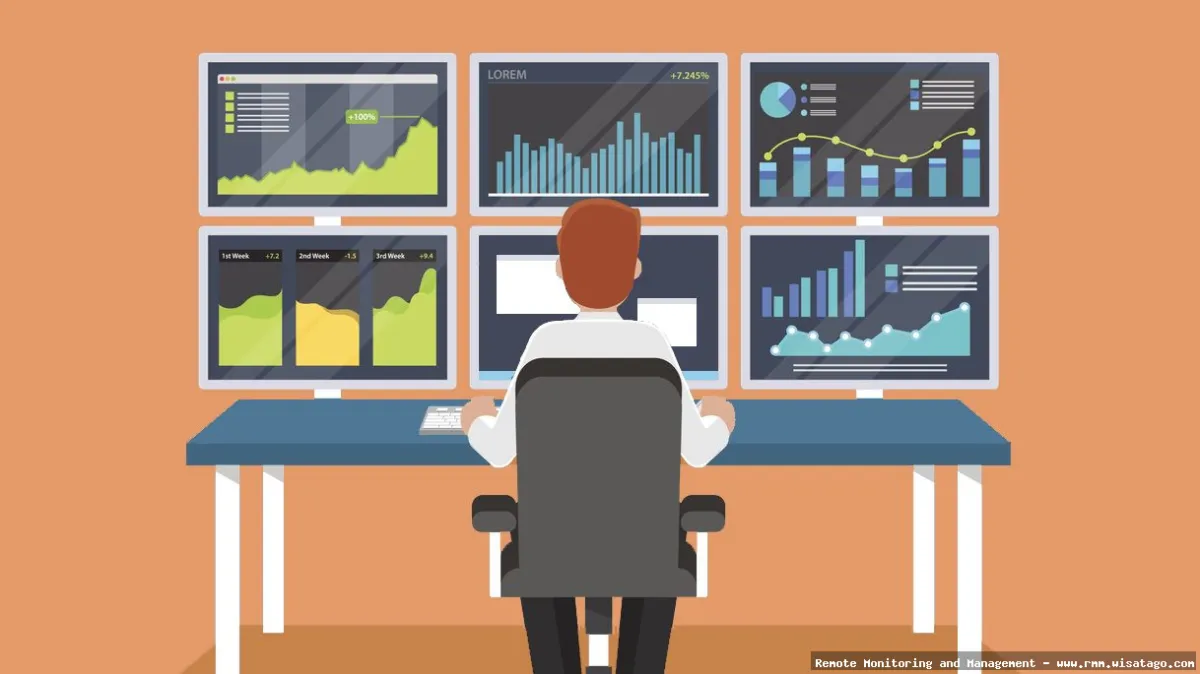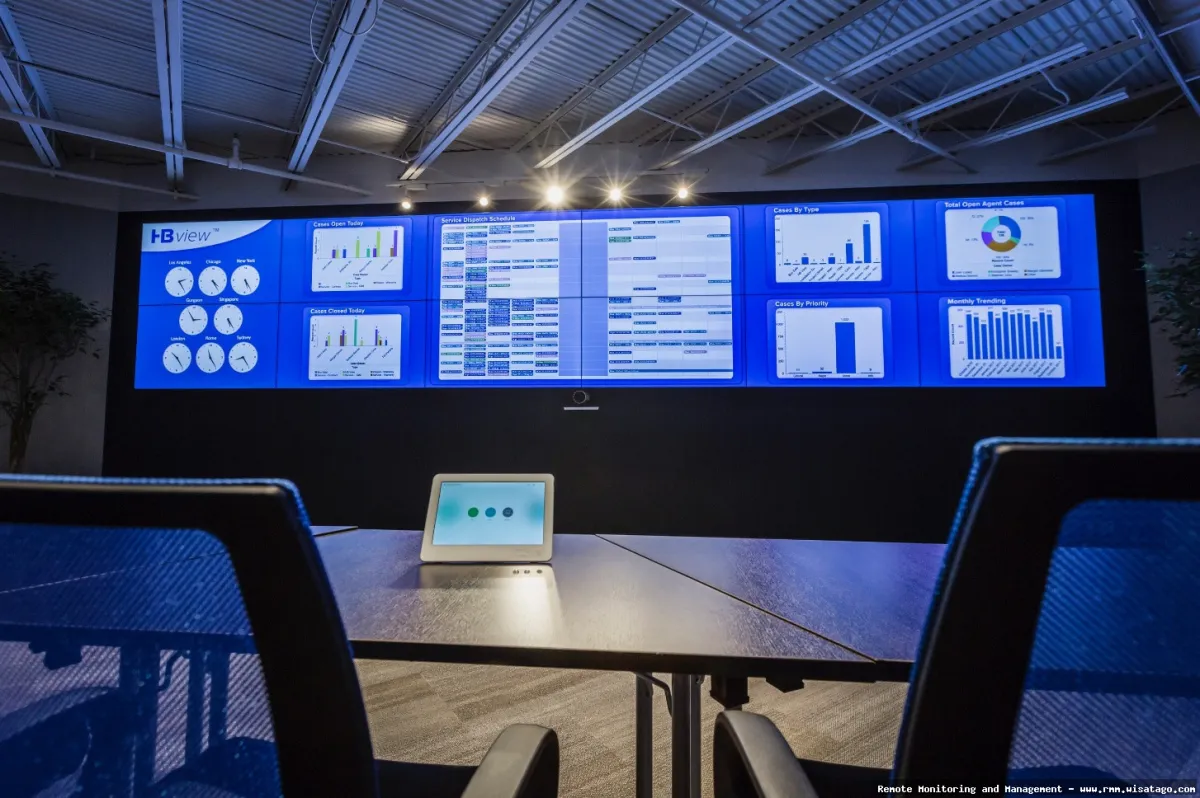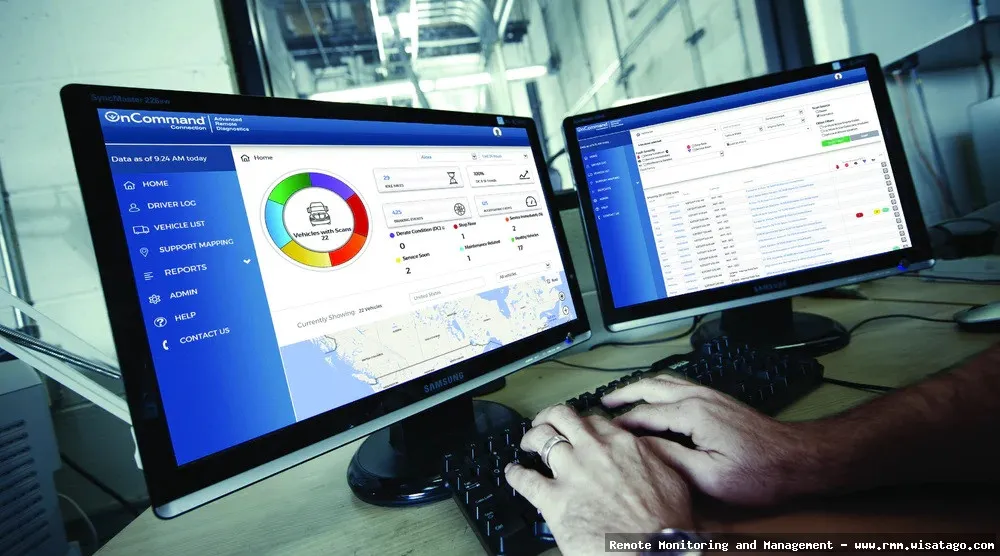In today’s fast-paced IT landscape, downtime is the enemy. Every minute a server is offline, a workstation is malfunctioning, or a critical application is struggling translates directly into lost productivity, frustrated users, and potentially significant financial losses. Traditionally, diagnosing hardware issues required physical access to the affected device – a costly and time-consuming process, especially for organizations with distributed workforces or remote locations. Thankfully, advanced Remote Monitoring and Management (RMM) platforms are changing the game, offering powerful capabilities for remote hardware diagnostics and proactive issue resolution.
Think of your RMM platform as a virtual IT technician, constantly monitoring the health and performance of your entire IT infrastructure. It’s not just about knowing when something breaks; it’s about identifying potential problems before they impact end-users. This is where advanced RMM solutions truly shine, providing deep insights into hardware performance, allowing you to diagnose issues remotely, and even remediate them without ever having to physically touch the device. This translates to faster resolution times, reduced downtime, and a more efficient IT team.

This article will delve into the world of remote hardware diagnostics via advanced RMM. We’ll explore the key features that enable this functionality, discuss the practical benefits of leveraging RMM for hardware monitoring, and address some of the challenges IT teams face when implementing these solutions. Whether you’re already using an RMM or considering adopting one, this guide will provide you with a comprehensive understanding of how to maximize its potential for proactive hardware management and improved IT operational efficiency.
What is Remote Hardware Diagnostics?
Remote hardware diagnostics is the process of identifying and troubleshooting hardware-related problems on a device from a remote location. Instead of physically inspecting a computer, server, or network device, IT professionals can use specialized tools and software to gather information about its performance, identify potential issues, and even perform repairs or adjustments remotely. This approach is particularly beneficial for organizations with geographically dispersed IT assets or limited on-site IT support.
Key Components of Remote Hardware Diagnostics
Several key components enable effective remote hardware diagnostics:
- Sensors and Monitoring Agents: These software agents are installed on the target devices and constantly collect data about hardware performance, including CPU utilization, memory usage, disk space, temperature, and network activity.
- Remote Access Tools: These tools allow IT professionals to remotely access and control the affected device, enabling them to run diagnostic tests, view system logs, and perform repairs.
- Diagnostic Software: Specialized software tools can perform in-depth hardware tests, identify faulty components, and provide detailed reports on the device’s health and performance.
- Centralized Management Console: This provides a single pane of glass for monitoring all managed devices, viewing alerts, and managing remote access sessions.
- Alerting and Notification Systems: These systems automatically notify IT professionals when a hardware issue is detected, allowing them to respond quickly and minimize downtime.
How Advanced RMM Enables Remote Hardware Diagnostics
Advanced RMM platforms integrate all the necessary components for remote hardware diagnostics into a single, comprehensive solution. They provide a centralized platform for monitoring, managing, and troubleshooting hardware issues across an entire IT infrastructure. Here’s how they achieve this:
Real-time Hardware Monitoring
RMM agents continuously collect data from managed devices, providing real-time visibility into hardware performance. This includes metrics such as:
- CPU utilization and temperature
- Memory usage and availability
- Disk space and I/O performance
- Network traffic and latency
- System event logs
This data is displayed in a centralized dashboard, allowing IT professionals to quickly identify performance bottlenecks, potential failures, and other hardware-related issues. Effective IT management is crucial for maintaining business operations, and RMM can be a vital component of that strategy
.
Proactive Alerting and Thresholds
RMM platforms allow you to set custom thresholds for various hardware metrics. When a threshold is exceeded, the system automatically generates an alert, notifying IT professionals of a potential problem. For example, you can set an alert to trigger when CPU utilization exceeds 80% or when disk space falls below 10%. This proactive alerting system allows you to address issues before they impact end-users.
Remote Access and Control
RMM platforms provide secure remote access to managed devices, allowing IT professionals to troubleshoot problems, run diagnostic tests, and perform repairs from anywhere with an internet connection. This remote access can be achieved through various methods, including:

- Remote desktop protocol (RDP)
- Secure Shell (SSH)
- Virtual Network Computing (VNC)
- Proprietary remote control tools
With remote access, IT professionals can perform tasks such as:
- Viewing system logs
- Running diagnostic utilities (e.g., memory tests, disk checks)
- Updating drivers and firmware
- Rebooting devices
- Remotely installing or uninstalling software
Automated Remediation
Many advanced RMM platforms offer automated remediation capabilities, allowing you to automatically fix certain hardware issues without manual intervention. For example, you can configure the RMM to automatically restart a service when it crashes or to clear temporary files when disk space is low. This automation can significantly reduce the time it takes to resolve common hardware problems and improve overall system stability.
Hardware Inventory and Asset Management
RMM platforms automatically collect detailed information about the hardware components of managed devices, including:
- Manufacturer and model number
- CPU type and speed
- Memory size and type
- Disk drive capacity and type
- Network adapter information
- Operating system version
This hardware inventory data can be used for asset management, warranty tracking, and capacity planning. It also provides valuable information for troubleshooting hardware issues.
Benefits of Using RMM for Remote Hardware Diagnostics
Implementing an advanced RMM solution for remote hardware diagnostics offers numerous benefits to IT teams and organizations:
Reduced Downtime
By proactively monitoring hardware performance and identifying potential issues before they cause failures, RMM helps to minimize downtime and keep critical systems running smoothly. Faster issue resolution through remote access also contributes to reduced downtime.
Improved Efficiency
Remote hardware diagnostics eliminates the need for physical visits to remote locations, saving time and travel costs. Automated remediation further streamlines the troubleshooting process, allowing IT professionals to focus on more strategic tasks.
Enhanced Security
RMM platforms provide secure remote access to managed devices, protecting sensitive data from unauthorized access. They also offer features such as two-factor authentication and role-based access control to further enhance security.

Cost Savings
By reducing downtime, improving efficiency, and preventing costly hardware failures, RMM helps to lower overall IT costs. The ability to remotely diagnose and repair hardware issues also reduces the need for expensive on-site support.
Better Resource Allocation
With a clear understanding of hardware performance and capacity, IT teams can make better decisions about resource allocation and avoid over-provisioning or under-provisioning hardware. This leads to more efficient use of IT resources and reduced capital expenditures.
Challenges of Implementing RMM for Remote Hardware Diagnostics
While RMM offers significant benefits, there are also some challenges to consider when implementing these solutions:
Initial Setup and Configuration
Setting up and configuring an RMM platform can be complex, especially for organizations with large and diverse IT infrastructures. It requires careful planning, proper configuration of monitoring agents, and the definition of appropriate thresholds and alerts.
Network Connectivity
Remote hardware diagnostics relies on a stable and reliable network connection to the managed devices. If a device is offline or has a poor network connection, it may be difficult or impossible to diagnose hardware issues remotely.
Security Concerns
Remote access to managed devices can pose security risks if not properly secured. It’s important to implement strong authentication measures, encrypt remote access sessions, and regularly audit access logs to prevent unauthorized access.
Agent Compatibility
RMM agents may not be compatible with all hardware devices or operating systems. It’s important to verify compatibility before deploying an RMM platform to ensure that it can effectively monitor all managed devices.
Data Overload
RMM platforms can generate a large amount of data, which can be overwhelming for IT professionals to process. It’s important to configure the RMM to collect only the data that is relevant to hardware diagnostics and to use filtering and reporting tools to identify the most important issues.

Best Practices for Remote Hardware Diagnostics with RMM
To maximize the effectiveness of RMM for remote hardware diagnostics, consider the following best practices:
Properly Configure Monitoring Agents
Ensure that monitoring agents are properly installed and configured on all managed devices. Verify that the agents are collecting the necessary data and that they are configured to report alerts appropriately.
Define Clear Thresholds and Alerts
Establish clear thresholds for various hardware metrics and configure alerts to notify IT professionals when those thresholds are exceeded. Regularly review and adjust these thresholds based on historical data and performance trends.
Implement Strong Security Measures
Implement strong authentication measures, such as two-factor authentication, for remote access to managed devices. Encrypt remote access sessions and regularly audit access logs to prevent unauthorized access.
Regularly Review and Update the RMM Platform
Keep the RMM platform and its monitoring agents up to date with the latest security patches and feature updates. Regularly review and update the RMM configuration to ensure that it is effectively monitoring and managing the IT infrastructure.
Train IT Staff
Provide adequate training to IT staff on how to use the RMM platform for remote hardware diagnostics. Ensure that they understand how to interpret the data collected by the RMM and how to troubleshoot hardware issues remotely.
Conclusion
Remote hardware diagnostics via advanced RMM is a powerful tool for IT teams looking to improve their operational efficiency, reduce downtime, and lower IT costs. By proactively monitoring hardware performance, identifying potential issues before they cause failures, and enabling remote troubleshooting, RMM helps to keep critical systems running smoothly and ensures a more stable and reliable IT environment. While there are challenges to consider when implementing RMM, following best practices and carefully planning the implementation can help to overcome these challenges and unlock the full potential of RMM for remote hardware diagnostics. Embrace the power of proactive monitoring and remote management to transform your IT operations and deliver a superior user experience.
Conclusion
In conclusion, the ability to perform remote hardware diagnostics through advanced RMM solutions represents a significant leap forward in IT management. We’ve seen how proactively identifying and addressing hardware issues, without the need for on-site visits, translates to minimized downtime, reduced operational costs, and improved overall efficiency. The detailed insights provided by these tools empower IT professionals to make informed decisions regarding maintenance, repairs, and upgrades, ultimately extending the lifespan and optimizing the performance of critical hardware assets.
The benefits of remote hardware diagnostics are undeniable, offering a strategic advantage in today’s increasingly complex and distributed IT environments. If you’re looking to enhance your IT infrastructure’s reliability, streamline your maintenance processes, and gain greater visibility into your hardware health, we encourage you to explore the possibilities offered by advanced RMM solutions. Consider a free trial or consultation with a reputable RMM provider to discover how these powerful tools can transform your IT management strategy and contribute to a more resilient and efficient organization. Take the next step and contact us today to learn more.
Frequently Asked Questions (FAQ) about Remote Hardware Diagnostics via Advanced RMM
How can using advanced Remote Monitoring and Management (RMM) tools help me proactively identify and diagnose hardware issues on remote computers before they cause downtime?
Advanced RMM platforms offer a range of features that enable proactive hardware diagnostics on remote machines. These tools continuously monitor critical hardware metrics like CPU temperature, RAM usage, disk health (using SMART data), and network adapter performance. By setting custom thresholds and alerts, you can be notified immediately when a metric deviates from the norm, indicating a potential problem. For example, a consistently high CPU temperature might suggest a cooling issue, while a failing SMART status on a hard drive signals imminent data loss. Advanced RMM solutions also often include automated scripts that can perform basic troubleshooting steps remotely, such as clearing temporary files or restarting services, potentially resolving minor issues before they escalate into significant downtime. This proactive approach minimizes disruptions and extends the lifespan of hardware assets.
What specific hardware components can I remotely diagnose using an advanced RMM solution, and what kind of diagnostic data can I expect to receive?
An advanced RMM solution offers comprehensive remote hardware diagnostic capabilities, covering a wide range of components. You can typically monitor and diagnose issues related to the CPU (utilization, temperature, clock speed), RAM (usage, available memory, errors), hard drives and SSDs (capacity, free space, SMART status, read/write speeds), network adapters (bandwidth usage, packet loss, connection status), and even battery health for laptops. The diagnostic data provided is detailed and actionable. For example, for hard drives, you’ll receive SMART attributes like reallocated sector count, spin-up time, and power-on hours, allowing you to predict potential failures. For network adapters, you can track bandwidth usage to identify bottlenecks and pinpoint devices consuming excessive resources. Remote hardware diagnostics via RMM provides a granular view of system health, allowing for informed decisions and timely intervention.
How secure is the process of conducting remote hardware diagnostics through an advanced RMM platform, and what security measures are in place to protect sensitive data?
Security is paramount when conducting remote hardware diagnostics. Reputable advanced RMM platforms prioritize security through multiple layers of protection. End-to-end encryption (typically using TLS/SSL) secures all communication between the RMM agent on the managed device and the RMM server, preventing eavesdropping. Strong authentication mechanisms, such as multi-factor authentication (MFA), protect against unauthorized access to the RMM platform itself. Role-based access control (RBAC) limits user permissions, ensuring that technicians only have access to the data and functions necessary for their roles. Furthermore, RMM vendors often undergo regular security audits and penetration testing to identify and address vulnerabilities. Data at rest is also typically encrypted. Advanced RMM security measures ensure that sensitive data remains protected during remote diagnostic procedures. Compliance with industry standards like HIPAA or GDPR (depending on the data handled) is also a key indicator of a vendor’s commitment to security.